Overview
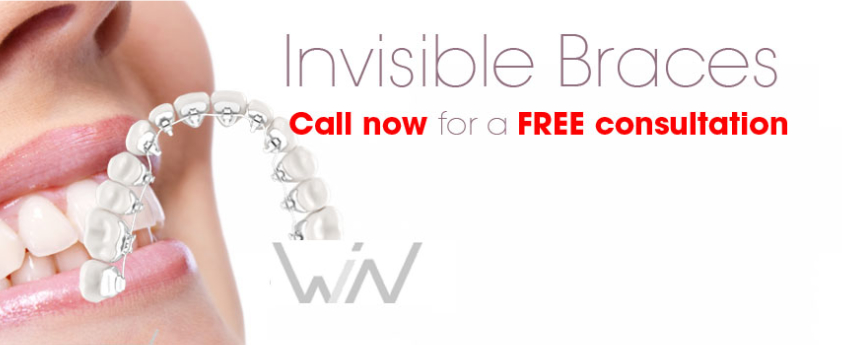
Our Orthodontic Services
What are braces?
Orthodontists use dental braces to correct crowded or misaligned teeth and jaws. They are typically applied in your early teens, though adults can use them too.
The aim is to align your teeth properly so that you have an even bite and a perfect smile.
A variety of braces are available. If the correction needed is minor, you can have removable appliances, called clear aligners or “invisible braces”. However, many people need fixed braces to sort out any unevenness in their teeth or jaw.
The good news is that having braces is much more comfortable than it used to be, thanks to advances in technology and materials.
Why braces are fitted
You may be told that you need braces if you have any of the following issues:
- There is too much space between your teeth
- Your teeth are either crooked or overcrowded
- Your upper front teeth overlap the lower teeth too much
- Your upper front teeth bite behind the lower ones
- You have some other misalignment of your jaw that means you have an uneven bite
There are several reasons why it is a good idea to have treatment that means your teeth and jaw are aligned correctly. Your teeth will look better, your mouth will generally be more healthy and you will be happier with the way you bite, chew and even speak.
Are there any risks?
Having braces is usually perfectly safe for you, but there can sometimes be risks associated with them:
Short-term:
The process of fitting your braces can create small spaces around your teeth where food can get trapped, leading to the build-up of plague. If these are not removed, that could mean the following problems:
- The loss of some minerals in the outer enamel of your teeth, which may leave you with whitish stains
- Gum disease and tooth decay
Longer-term:
- Sometimes, moving a tooth can make its root shorter, which in turn means the tooth itself will be less stable
- If you don’t follow closely your orthodontist’s advice when your braces are removed, you might find that some of the correction your braces have caused goes away
The good news is that there are plenty of ways in which you can reduce the risk of damaging your braces and the teeth they are protecting:
- Cut back on food and drinks that are high in sugar; these can lead to problems with plaque and tooth decay
- Brush your teeth really well, after every meal if possible, and make sure you use a fluoride toothpaste and a soft-bristled brush; rinse well too to make sure all the particles are washed out of your braces
- Use dental floss or even a mini toothbrush to get in between between your braces and behind the wires
- Try to stay away from sticky foods like chewing gum or toffee, which could drag your braces off or pull them out of place
- Avoid crunchy or hard foods that could damage your braces
- Make sure you visit your dentist regularly for cleaning and check-ups
- Follow closely all the instructions given to you by your orthodontist
How do you know if you need braces?
If your dentist spots any problem with your teeth or jaws, they will probably refer you to an orthodontist, who will be an expert in preventing and treating irregularities in teeth.
Most children have braces fitted when they are between eight and 14, when most of their teeth have come through but their bones are still growing. That means the teeth will be easier to move.
Preparing for braces
There are several steps before you have braces fitted:
- Oral exam. Your orthodontist will make a full check-up.
- X-rays. These will show the position of your teeth. Orthodontists can now get a full picture of all your teeth and even take 3D pictures for extra accuracy.
- Plaster models. You bite into a soft material for a few minutes. A plaster model of your teeth can then be made and the orthodontist can assess your bite.
- Tooth extraction. If your mouth is very crowded, there may not be enough room for all your teeth. If this is the case, your orthodontist may recommend taking out one or more teeth to leave more room for the others.
- Surgery. In extreme cases where moving or extracting a tooth won’t be enough, you may need a small operation to reposition your jaw, as well as orthodontic treatment.
The three stages of wearing braces
1) Your braces are installed
Fixed dental braces are usually made up of:
- Brackets attached to the teeth, usually on the outside. Modern braces are stainless steel or ceramic and are much less noticeable than they used to be.
- Bands around your molars. Your orthodontist will create space by placing very small rubber bands between the teeth.
- A flexible wire that connects all the brackets and bands.
- Small rubber or metal ties to fasten the wire to the brackets.
- In more complex cases, you may need to wear headgear at night to aid the process of getting teeth into the right place.
- Some patients need temporary anchorage devices, which are tiny screws through the gums into the jaw.
- Some people who need only minor corrections can use clear aligners. These are worn 24/7, except when eating or brushing your teeth, and you can only drink water while you are wearing them.
2) Regular adjustments
Once the fixed braces have been installed, your orthodontist will adjust them every so often by tightening or bending the wires that link the brackets and bands. This will gently persuade the teeth into their new positions.
Sometimes, your orthodontist may stretch elastic bands between upper and lower teeth to help the alignment.
Your teeth and jaws might feel a little sore for the first few days after an adjustment.
3) Retainers
Once your braces come off, the teeth need to be held in their new positions to stop them moving back where they were. You will get a specially-fitted retainer, usually made of plastic and usually removable, that will keep your teeth in place.
Do braces work?
Yes, they are usually very effective in realigning teeth and leaving you with an even smile and a healthy mouth.
Most people wear braces for between one year and three years, though retainers can we worn indefinitely after that.
For braces to work properly, it’s essential that you follow your orthodontist’s instructions, especially while the retainer is in place. It’s tempting to think that your treatment is over, but you must wear the retainer as directed so that your teeth stay in their new positions.
If you’re an adult, braces can still produce similar results, but you may need to wear them longer than a younger person would, because your facial bones are no longer growing. This fact also means there may be some problems that cannot be corrected with braces alone.
When is the right time for my child to have braces fitted?
The best time for your child to get dental braces depends on how severe the misalignment of their teeth is, and what it has been caused by.
If you think your child will need their teeth corrected, you should consult with your dentist and an orthodontist when the child is about seven years old.
Dental braces are usually fitted once a child has lost most of his or her baby teeth and most of their adult teeth have come through. This is usually between the ages of eight and 14.
During this time, any measures taken can coincide with your child’s growth and align their teeth while their physical development takes place.
Some orthodontists recommend using dental appliances at an earlier age, while the child still has mostly baby teeth, and following up with a second treatment when they have their adult teeth. They believe this second phase will be shorter if the earlier treatment has taken place.
However, this two-phase approach may increase the total time and expense of treatment.
Ultimately, the best choice for your child will depend on the nature of their own issues. The ideal choice of action is to consult your dentist or orthodontist to work out what is best in your case.
Types Of Orthodontic Dental Braces
Dental Braces Most Often Used By Our Surbiton Surrey Orthodontist Are:
 Fixed Braces
Fixed Braces
Ceramic dental braces and Lingual braces. Fixed Orthodontic dental braces (sometimes called “train tracks”) can’t be removed except by your orthodontist. They are made of small brackets that are stuck with filling material to your teeth and joined together with a wire. Fixed Orthodontic dental bracescan be used on upper and lower teeth. Once the treatment is finished the brackets and filling material are cleaned off your teeth.
Removable Aligners
Invisalign (Invisible / clear braces), clear step and Inman aligners are made of plastic and usually have wire clips and springs to move specific teeth. They are mostly used to move upper teeth. A removable brace must be taken out to be cleaned but it should be worn at all other times, including meal times and at night.
Eating with a removable brace can feel awkward at first but it gets easier with practice.
Adult Dental Braces
 You are never too old for orthodontic treatment!
You are never too old for orthodontic treatment!
Adult dental Braces; At our Surbiton Kingston Dental Brace Clinic tooth movement with orthodontic appliances can be achieved at any age. Almost all the patients treated at our Kingston orthodontist are adults. The biological processes involved in tooth movement are the same in both adults and children. The health of the teeth, gums, and supporting bone is very important to the success of orthodontic treatment in adults as well as children.
Modern techniques have made orthodontic treatment more comfortable and shorter in duration; and less visible or invisible braces (Invisalign) have made the wearing of dental braces much more acceptable for adults.
Most adult orthodontic treatment is to improve their smile and enhance their self-esteem. Others take orthodontic treatment to improve their bite, chewing, or to make it easier to maintain good oral hygiene. Some adults have orthodontic treatment at our Surrey orthodontic dental centre as part of an overall comprehensive dental treatment plan in conjunction with other dental specialist treatment to improve dental function and aesthetics.
Ceramic Dental Braces
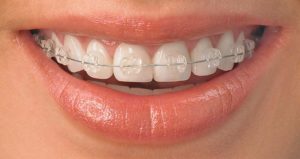 Dr Soltani and Dr Swanepoel offer patients a free consultation at this Surrey based orthodontic practice.
Dr Soltani and Dr Swanepoel offer patients a free consultation at this Surrey based orthodontic practice.
If you are considering ceramic braces or simply would like to discuss your options feel free to book a free consultation. Alternative orthodontic treatment including Inman aligner, Invisalign braces, six month smile braces, and Damon braces offered at the practice.
The fixed orthodontic ceramic dental braces are the most common type of dental brace, often known as “train tracks”. Dental braces, also referred to as orthodontic brackets, can be effectively used to resolve almost all the abnormalities of your teeth. Apart from straightening the teeth, ceramic orthodontic braces can rectify all the irregularities associated with malocclusions – problems such as crossbites, overbites and underbites.
These can also be used to align overcrowded, twisted and widely spaced teeth. Ceramic dental braces are strong and less visible, appearing more natural than metal braces.
In this type of orthodontic treatment, brackets which are translucent glass materia are glued onto the teeth and linked by wires. Small elastic hoops are often used to hold the wire in position. In fixed dental braces the wires exert gentle pressure to move the teeth into a new position. The brackets neither stain nor discolour, maintaining their original appearance all the way through to the end of treatment. Since the ligatures are prone to stain, they have to be changed, usually on a monthly basis.



Damon Braces
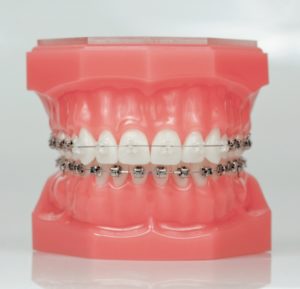 The Damon braces system is a revolutionary approach to orthodontic treatment.
The Damon braces system is a revolutionary approach to orthodontic treatment.
Traditional orthodontic braces have elastic bands which cause friction and pressure. Damon braces uses slide wire mechanism which eliminates need for the band and elastic setup that helps to reduce friction and discomfort to minimum. The slide method puts a gentler force onto your teeth, making the treatment a lot more comfortable but still maintaining the effective results which come with traditional brace.
Achieving a good dental hygiene during the treatment with Damon braces is easier as there is not band to collect plaques. It also has much quicker treatment period and less follow up visits to dentist.
Orthodontic & Tooth Decay & Prevention
Do Orthodontic Treatments
Lead To Tooth Decay?
Orthodontic treatments involve enhancing the appearance of the teeth through a range of cosmetic devices, including braces. Many people worry that braces and other devices lead to tooth decay, but the short answer is that they do not – at least not alone.
The problem with oral appliances is not so much the devices themselves, but the fact that they can harbour food particles which can then go on to cause tooth decay if not removed. The best approach, therefore, is to adopt impeccable oral hygiene, removing bits of food from around these appliances, before harmful bacteria can metabolise them.
The Best Brushing Technique
To prevent tooth decay, you not only have to see your dentist regularly but also make sure that your brushing technique is correct. Incorrect brushing techniques leave a film of plaque on the teeth which bacteria can then use to eat away at your enamel.
Use A Small Brush With Soft Bristles
Small brushes not only enable you to brush behind back teeth, but they also help to avoid damage to the gums caused by excessive brushing. Softer bristles may help in this regard too.
Apply Sufficient Pressure
The only way to remove plaque from the surface of teeth is to apply a mechanical brushing action. Sometimes, though, people may not apply enough pressure to remove the plaque effectively, negating many of the benefits of brushing. A good rule of thumb is to use enough pressure so that you can feel the action of the bristles on your gum line. For those who are more technically-minded, you need a brushing pressure of around 150 grams.
Use An Electric Toothbrush
Electric toothbrushes may be able to more effectively remove plaque and bacteria from around the teeth than manual brushing.
Use Specialist Brushes
If you have brackets or wires in your mouth, you may want to use specialist brushes to get in underneath and remove food debris.

Brush For Two Minutes
Brushing for two minutes ensures that you remove the majority of harmful bacteria and plaque from your mouth.
Brush On The Inside Of The Gumline
The inside of the gumline is a neglected area. Don’t forget to brush behind the front teeth, both top and bottom.
Use The Proper Technique
A brushing technique makes a significant difference to how well you clean your teeth. Two critical actions get the best results: gentle rotations on the surface of each tooth, and vertical brushing actions over both teeth and gums. Avoid, if possible, horizontal brushing action, as this can wear away teeth and damage gums.
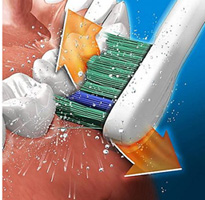
What About Flossing?
Can flossing prevent tooth loss? While flossing is something of a controversial topic in and of itself, most dentists are in agreement that flossing cannot replace brushing. Some dentists recommend flossing for people who use orthodontic devices in the hope that it will remove more food particles.
However, there is a worry that some people will substitute flossing for brushing, leading to decreased brushing time. If you want to floss, then it should be strictly in addition to brushing – it shouldn’t replace it.

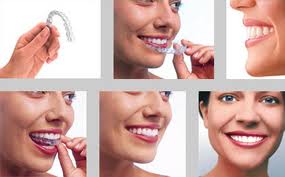

 Out of hours emergency:
Out of hours emergency:
 148 Ewell Road, Surbiton, Surrey, KT6 6HE
148 Ewell Road, Surbiton, Surrey, KT6 6HE


 +44 20 8339 9333
+44 20 8339 9333


 Fixed Braces
Fixed Braces You are never too old for orthodontic treatment!
You are never too old for orthodontic treatment!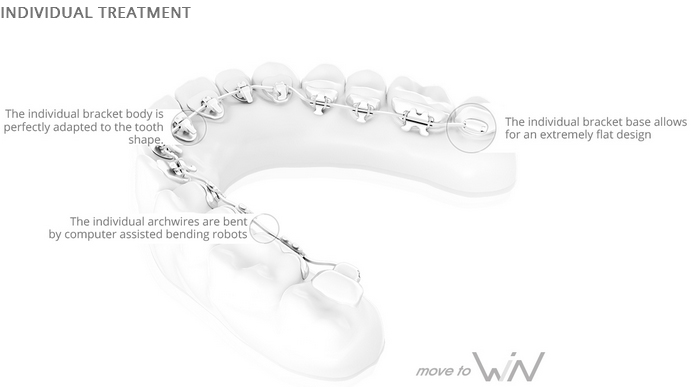









 The Damon braces system is a revolutionary approach to orthodontic treatment.
The Damon braces system is a revolutionary approach to orthodontic treatment.












